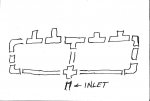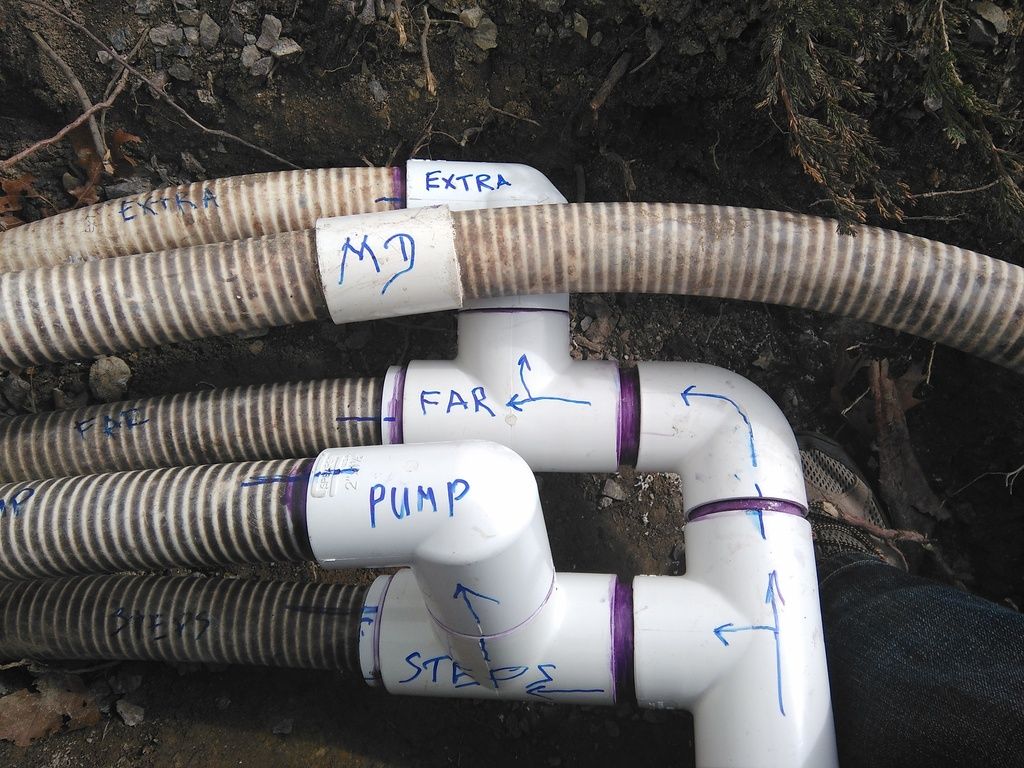Hi!
I'm adding solar panels to my pool, so I need to redo some of the return side plumbing. I have 4 returns, and 2 of them are short and two of them are long (distance from the pump).
Originally I planned on going with balanced split with 3 bullhead tees (top to bottom flow on the pic):

Well, it turns out to be too wide for my project and then I learned that bullhead tees are not very efficient and produce a lot of head.
So one of the alternatives is to replace 2 bullhead tees with 2 branch tees that are less restrictive:

I like this since it's still have some symmetry and I can attach longer returns to straight runs and shorter ones to branched runs balancing out the flow.
There is also a possibility to replace the top bullhead with a branch tee as well or even use the cross like I have right now (ignore the plumbing mess - this is what I'm redoing):

But in this scenario I'm not sure which return to attach to what position and perfectionist in me is bothered that. In the last pic, I would imaging that the most straight run is the least restrictive, but how about the rest?
I know, I'm overthinking this
I'm adding solar panels to my pool, so I need to redo some of the return side plumbing. I have 4 returns, and 2 of them are short and two of them are long (distance from the pump).
Originally I planned on going with balanced split with 3 bullhead tees (top to bottom flow on the pic):

Well, it turns out to be too wide for my project and then I learned that bullhead tees are not very efficient and produce a lot of head.
So one of the alternatives is to replace 2 bullhead tees with 2 branch tees that are less restrictive:

I like this since it's still have some symmetry and I can attach longer returns to straight runs and shorter ones to branched runs balancing out the flow.
There is also a possibility to replace the top bullhead with a branch tee as well or even use the cross like I have right now (ignore the plumbing mess - this is what I'm redoing):

But in this scenario I'm not sure which return to attach to what position and perfectionist in me is bothered that. In the last pic, I would imaging that the most straight run is the least restrictive, but how about the rest?
I know, I'm overthinking this




